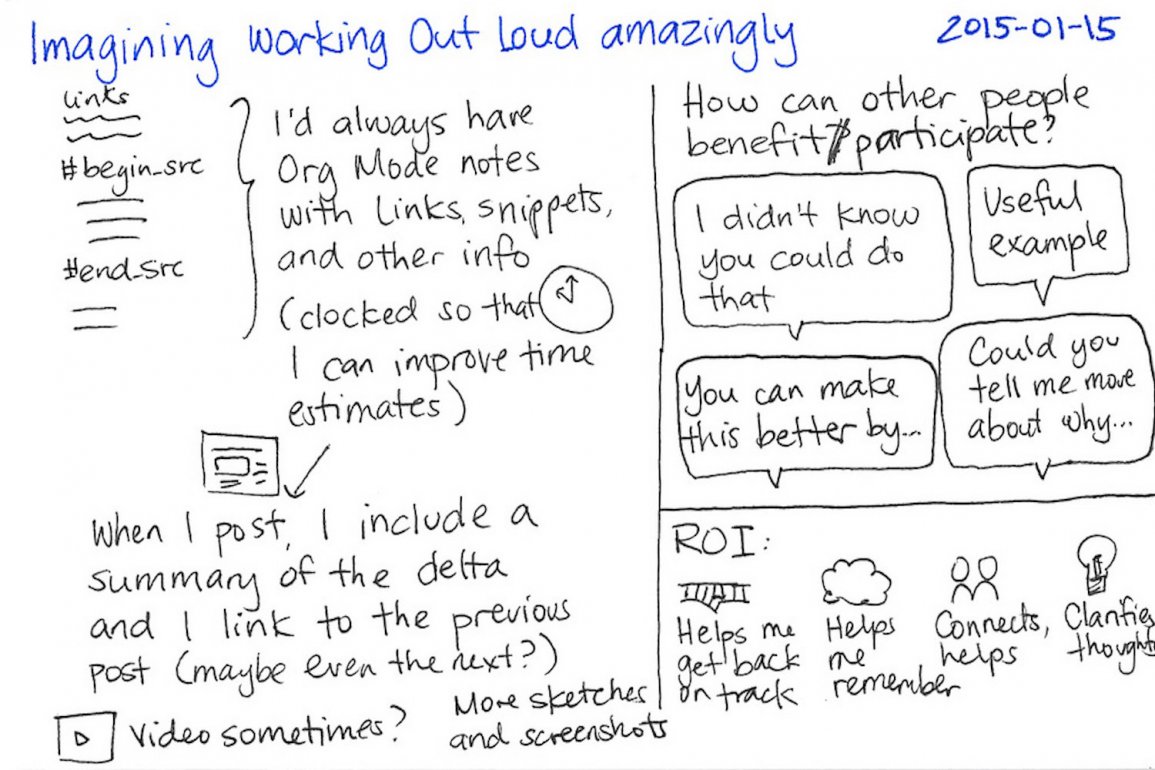By Anna Betz and George Pór for Enlivening Edge Magazine
If you’ve been swimming in the ocean of computer-supported cooperative work for a couple of years, as some readers and writers of EE Magazine have been doing, then it is too easy to forget about the experience of dipping your toes in the water, the first time, to check whether the water is warm enough for comfort.
At the same time, it’s worth remembering that the annual Conference on Computer-Supported Cooperative Work and Social Computing will have its 20th [!] edition, this year, so it’s been going on already for two decades.
It took all those years for someone to turn digital collaboration from a concept of the geeky elite to a massive movement for new ways of working, and to come up with a new meme (Working Out Loud) and the accompanying book, TED talk, podcasts, video tutorials, and a website with 1,150,000 webpages (as of today, 6 January, 2018).
As this movement emerged, the emphasis shifted from fascination with the technology to an appreciation of relational practices for using it.
“Working Out Loud is an approach to building relationships that can help you in some way… Instead of networking to get something, you lead with generosity, investing in relationships that give you access to other people, knowledge, and possibilities. Part of the process is learning ways to make your work visible and frame it as a contribution.
“When you Work Out Loud, you feel good and empowered at the same time because the practice taps into your intrinsic needs for autonomy, mastery, and purpose. As people across an organization Work Out Loud, work becomes more effective and fulfilling, and the culture becomes more open and collaborative.” ~ from workingoutloud.com
No wonder that the movement is gaining popularity, as a Green wave of “capitalism with a human face” is washing over the corporate world.
For WOL to be experienced as fun, people join WOL circles. According to the estimates of the movement’s founder, a year ago there were approximately 10,000 participants in WOL circles.
How WOL Circles Work
(This section is excerpted from the official Working Out Loud Circle Guide.)
You can think of your WOL Circle as a kind of “guided mastery” program for collaboration and relationship-building. You learn by doing. Each week, with the help of the Circle Guides and the other members of your Circle, you practice different ways to find people related to your work and develop meaningful relationships.
Circles are best with four to five people. More than five people means there’s too much communications overhead and not enough time to provide detailed feedback on each individual’s progress. Generally, more diverse Circles lead to more creativity and ideas. Many Circles meet via video, allowing them to include people in different locations.
Circles meet for one hour a week for 12 weeks. Think of the hour you meet each week as investing 2% of your time to develop a 21st-century skill. Making that investment for 12 weeks is long enough for you to develop new habits, and short enough so your effort is focused and sustainable.
You can learn more about Working Out Loud and WOL Circles by watching the TEDx talk “Working Out Loud: The Making of a movement”.
Does WOL Subvert Hierarchies?
No doubt, work can become more fulfilling in a more collaborative culture. However, the corporate management’s decades-long unfulfilled desire to make their employees more collaborative produced only a huge industry of “culture change” consultancies and a vast majority of workers still disengaged. Why?
Companies where WOL is popular are not necessarily self-managing.
“In times of constant change and instability, hierarchy turns out to be an inadequate, perverted and perverting system. Managers are superheroes who know the answers to all the questions. Staff is treated like children who have to be punished and rewarded. And the client is even not present in the organization chart.” ~ Source: Social Technologies in Business: Connect, Share, Lead
By Collective, Isabel De Clercq (dir.)
“Digital is about the opposite. It’s about the Renaissance of work. Focus goes finally back to the individual (employee and customer).
The individual is not reduced to its position in the hierarchy but is a node in a network.
The individual is part of communities with people from inside and outside the organization (stakeholders – partners – competitors and customers). Digital is about the boundaryless organization. Digital is about value creation with customers and community thinking. This is the complete opposite of the way organizations are used to work.” ~ Digital Subverts Hierarchy
Except when it does not. There are plenty of examples for how old traditional organisations assimilate the new, electronic tools of production, without changing the essence of the top-down organization of work. That will probably not change until the better results of their smarter, more future-responsive competitors push them to change.
 Anna’s background is in Health and Social Care with training in Herbal Medicine, Socialwork, Mindfulness Practice, Transparent Communication, and Systemic Family Therapy. She practices a pro-active evolutionary approach to Health and Wellbeing and leads on projects in the UK National Health Service using Mindfulness and diet for people suffering from chronic inflammatory diseases like diabetes and dementia. Her passion for building thriving and sustainable communities inspired her to co-found the HealthCommonsHub. She feels at home in places where individual, communal, organisational, and social evolution meet, and where people support each other in becoming whole and feel enlivened.
Anna’s background is in Health and Social Care with training in Herbal Medicine, Socialwork, Mindfulness Practice, Transparent Communication, and Systemic Family Therapy. She practices a pro-active evolutionary approach to Health and Wellbeing and leads on projects in the UK National Health Service using Mindfulness and diet for people suffering from chronic inflammatory diseases like diabetes and dementia. Her passion for building thriving and sustainable communities inspired her to co-found the HealthCommonsHub. She feels at home in places where individual, communal, organisational, and social evolution meet, and where people support each other in becoming whole and feel enlivened.

George Pór is an evolutionary thinker and a strategic learning partner to visionary leaders in business, government, and civil society. He is the originator of Enlivening Edge, and has been publishing the Blog of Collective Intelligence since 2003. A select list of his articles and book chapters on the fields of collective intelligence, organizational and social renewal can be found here. More about George’s work on the enlivening edge of planetary transformation is here.





Hooray for working out loud! I hadn’t heard of it. I envision a world where we LIVE out loud as well and have our real concerns come alive in the relational field daily!